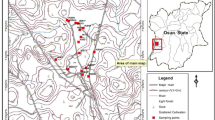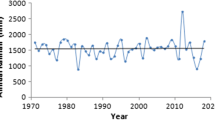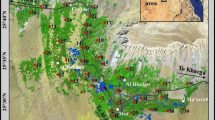Abstract
Water, an integral part of human life should regularly be assessed to ensure the desired quantity and quality. No aspect of the living organism and industrialisation can be sustained without water. The satellite towns of Ebenebe, Ugbene, Urum, Isuaniocha and Mgbakwu are located very close to Awka the capital of Anambra State, SE, Nigeria. This study is geared toward assessing the suitability of the water sources in these towns for domestic, agricultural and industrial uses. Fifteen water samples were collected from both surface water and groundwater sources. The samples were subjected to chemical and microbial analyses. The result of chemical analysis indicates that the water sources are slightly acidic. The major ions are within the WHO desirable limit. There is, however, enrichment of heavy metals such as mercury, chromium, cadmium, and iron. These heavy metals have serious negative health implications. The biological analysis result indicates the presence of the coliform group of bacteria and the presence of fecal coliform. These denote the presence of biological pollution. The WQI values depict water that ranged from unsuitable to excellent. Also, the Heavy Metal Pollution Index indicates water that range from very poor to very good. The results obtained show that some of the water sources are polluted. Also, the %Na status is from good to excellent and SAR suggests water that is excellent for agriculture. Calcium and sulphate are the dominant ions. The major water types are Ca2+–Mg2+–Cl−–SO42− and Ca2+–Mg2+–HCO3− suggesting water that has undergone mixing. In 93.3% of the samples, the alkaline earths exceed the alkalis while strong acids exceed weak acids in 73.3% of the samples. The chloro-alkaline indices were positive indicating reverseion exchange. Hence, the dominant hydrochemical process is reverse ion exchange.




Similar content being viewed by others
References
American Public Health association (APHA) (2005) Standard method for the examination of water and wastewater, 20th edn. APHA, Washington, pp 9–132
Appelo CAJ, Postma D (2005) Geochemistry, groundwater and pollution, 2nd edn. A.A. Balkema Publishers, Amsterdam, pp 375–400
Back W (1966) Hydrochemical facies and groundwater flow patterns in northern part of Atlantic coastal plain. In: Freeze RA, Cherry JA (eds) Groundwater. Prentice Hall, Englewood, p 253
Back W, Hanshaw B (eds) (1965) Chemical geohydrology advances in hydrosciences. Academic Press, USA, p 156
Durov SA (1948) Natural water and graphic representation of their composition. In: Freeze RA, Cherry JA (eds) Groundwater. Prentice Hall Inc., Englewood Cliffs, p 251
Hounslow A (1995) Water quality data: analysis and interpretation. CRC Press, Boca Raton
Langguth HR (1966) Die grundwasservehaltnisse Bereich des velberter satteis Rheinisches Schiefergeberge, Ger Minister fuer Ernaehrung, Landwritscaft und Foersten NRW, Dusseldarf, pp 127
Lloyd JA, Heathcote JA (1985) Natural inorganic hydrochemistry in relation to groundwater: an introduction. Oxford University Press, NewYork, p 296
Okolo CM, Akudinobi BEB, Obiadi II, Onuigbo EN, Obasi PN (2018) Hydrochemical evaluation of Lower Niger drainage area, southeastern Nigeria. Appl Water Sci 8(7):201
Piper AM (1944) A graphical interpretation of water analysis. Trans Am Geophys Union 25:914–928
Reza R, Singh G (2010) Assessment of groundwater quality status by using water quality index method in Orissa, India. World Appl Sci J 9(12):1392–1397
Rina K, Datta PS, Sigh CK, Mukherjee S (2011) Characterization and evaluation of processes governing groundwater quality in parts of the Sabarmati Basin, Gujarat using hydrogeochemistry integrated with GIS. Hydrogeol Process. https://doi.org/10.1002/hyp.8284
Schoeller H (1965) Geochemistry of groundwater. An international guide for research as practice. In: Freeze RA, Cherry JA (eds) Groundwater. Prentice Hall Inc., Englewood Cliffs, p 251
Schoeller H (1967) Qualitative evaluation of groundwater investigation and development. Water resources. Ser. UNESCO, Press, 33: 44–52
Todd DK (1980) Groundwater hydrology. Wiley, New York, pp 280–281
Wedepohi KH (1978) Handbook of geochemistry, 11/5.XXXII+15465. Springer-Verlag, Berlin-Heidelberg-New York
Wilcox LV (1955) Classification and use of irrigation waters. USDA Circular No. 969: 19
World Health Organization, (WHO) (2006) Guidelines for drinking water quality, 1, Recommendation Geneva, Switzerland: 60
World Health Organization (2011) Guidelines for drinking water quality, 4th edn. World Health Organizations, Malta.
Funding
The research is funded by the authors through contributions.
Author information
Authors and Affiliations
Corresponding author
Ethics declarations
Conflict of interest
The authors hereby report that there are no conflict of interest arising from this research work and report.
Additional information
Publisher's Note
Springer Nature remains neutral with regard to jurisdictional claims in published maps and institutional affiliations.
Rights and permissions
About this article
Cite this article
Okolo, C.M., Akudinobi, B.E.B. & Obiadi, I.I. Evaluation of water resources of some satellite towns in the central part of Anambra State, SE, Nigeria. Sustain. Water Resour. Manag. 6, 102 (2020). https://doi.org/10.1007/s40899-020-00463-y
Received:
Accepted:
Published:
DOI: https://doi.org/10.1007/s40899-020-00463-y




